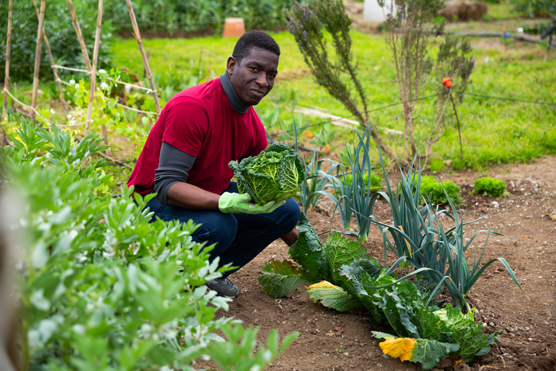
Subheading: Introduction to Vegetable Gardening
Growing your own vegetables can be a rewarding and fulfilling experience. Not only does it allow you to enjoy fresh, homegrown produce, but it also connects you with nature and promotes a healthier lifestyle. However, starting a vegetable garden can seem daunting for beginners. Fear not! With the right tips and techniques, you can create a thriving vegetable garden right in your backyard.
Subheading: Choosing the Right Location
The first step to a successful vegetable garden is selecting the right location. Choose a spot in your yard that receives ample sunlight, ideally at least six hours of direct sunlight per day. Ensure that the area has good drainage to prevent waterlogging, as most vegetables prefer well-drained soil. Additionally, consider proximity to a water source for easy irrigation.
Subheading: Preparing the Soil
Preparing the soil is essential for a thriving vegetable garden. Start by removing any weeds and debris from the area. Then, loosen the soil using a garden fork or tiller to improve aeration and drainage. Incorporate organic matter such as compost or aged manure to enrich the soil with essential nutrients. Aim for a soil pH level of around 6.0 to 7.0, which is ideal for most vegetables.
Subheading: Choosing the Right Vegetables
When selecting vegetables for your garden, consider factors such as your climate, available space, and personal preferences. Begin with easy-to-grow vegetables like tomatoes, peppers, lettuce, and beans, which are suitable for beginners. Research the specific requirements of each vegetable, including planting depth, spacing, and watering needs.
Subheading: Planting and Care
Once you’ve chosen your vegetables, it’s time to plant them in your garden. Follow the recommended planting instructions for each crop, taking into account factors such as spacing and depth. Water the newly planted seeds or seedlings thoroughly and continue to water regularly, especially during dry spells. Mulching around plants can help retain moisture and suppress weeds.
Subheading: Pest and Disease Management
Keeping pests and diseases at bay is essential for a healthy vegetable garden. Monitor your plants regularly for signs of pests such as aphids, caterpillars, and beetles, and take appropriate measures to control them, such as handpicking or using organic pesticides. Practice crop rotation and proper sanitation to prevent the buildup of pests and diseases in the soil.
Subheading: Harvesting Your Bounty
One of the most rewarding aspects of vegetable gardening is harvesting your homegrown produce. Pay attention to each crop’s harvesting requirements, as timing is crucial for optimal flavor and quality. Use clean, sharp tools to harvest vegetables to minimize damage to the plants. Enjoy the fruits of your labor fresh from the garden or preserve them for later use through freezing, canning, or drying.
Subheading: Continuous Learning and Improvement
Vegetable gardening is a continuous learning process, and there’s always room for improvement. Take note of what works well in your garden and what doesn’t, and adjust your approach accordingly. Experiment with new vegetable varieties, gardening techniques, and companion planting to optimize your garden’s productivity and sustainability.
Subheading: Conclusion
Starting a vegetable garden may seem intimidating at first, but with the right tips and guidance, anyone can grow their own delicious and nutritious produce. By choosing the right location, preparing the soil, selecting suitable vegetables, and providing proper care, you can create a thriving vegetable garden that brings joy and satisfaction for years to come. Read more about vegetables garden









